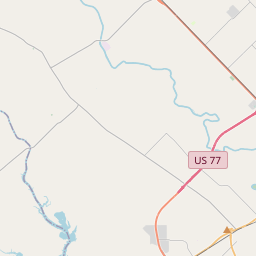Joe F. and Amelia Jecker House
Historical marker location:






After Republic of Texas President Sam Houston granted the original land to the town of Victoria in December 1841, the Rev. William C. Blair bought several parcels of land in the community, including this one. Blair came from Natchez, Mississippi in 1838 and organized a Presbyterian church and Sabbath school across the street from this lot on what became known as Presbyterian Church Square. Blair sold the site in 1851, and the property changed hands several times before James B.P. January bought it in 1859. A native of Kentucky, January came to Victoria after service as a physician for the Army of the Republic of Texas and for the U.S. Army during the U.S.-Mexico War. He settled in Victoria and became a full-time community doctor, and he built a house here by 1860.
In 1872, January sold the property to George Williams, who served a term as Victoria's mayor. A sharp increase in the property's value during Williams' ownership indicates changes or new construction at the site. Louis Jecker bought it in April 1885 and gave the north half of the lot, inclunding the Williams' home, to his daughter Theresa A. Jecker shortly after she wed her cousin Joseph F. Jecker. The Jeckers later hired noted Victoria architect Jules C. Leffland to remodel the home, and contractor Henry Schroeder finished the project in the fall of 1904. The Jecker family owned the property until 1971. Subsequent owners have preserved the structure and the details added during the 1904 renovation, including turned spindle friezework and jigsawn brackets. The home, which reflects Victorian-era design, remains a landmark in the city as the closest extant residence to De Leon Plaza.
Recorded Texas Historic Landmark - 2005
As one of the most visible programs of the Texas Historical Commission (THC), historical markers commemorate diverse topics in Texas history, including: the history and architecture of houses, commercial and public buildings, religious congregations, and military sites; events that changed the course of local and state history; and individuals who have made lasting contributions to the state, community organizations, and businesses.
Texas is known for its barbecue, and one of the most famous barbecue restaurants in the state is Kreuz Market in Lockhart. The restaurant has been in operation since 1900 and is still family-owned.
In the early 19th century, Anglo-American settlers began to move into the area, attracted by the fertile land for agriculture and the potential for ample grazing. The Mexican government encouraged colonization, and by 1834, there were around 100 families living in the region. However, tensions between the settlers and the Mexican government eventually led to the Texas Revolution in 1835.
During the Texas Revolution, Victoria became a strategic point for both the Texian and Mexican armies. The Battle of Guadalupe River occurred here in 1835, where the Texian rebels under the command of George Collingsworth captured the Mexican garrison without bloodshed. The town of Victoria formally became the capital of the Republic of Texas in 1839 before it was moved to Houston and later Austin.
In the late 19th and early 20th centuries, Victoria County experienced significant growth and development. The railroad arrived in the late 1800s, leading to increased trade and the expansion of the local economy. The discovery of oil in the early 20th century further contributed to the county's prosperity. Today, Victoria County is a thriving hub for agriculture, oil and gas production, and serves as a regional center for healthcare, education, and businesses.
Victoria County Timeline
This timeline provides a concise overview of the key events in the history of Victoria County, Texas.
- 1824 - Victoria County is established as a Municipality of Mexico
- 1836 - Texas gains independence from Mexico
- 1837 - Victoria County is created as an original county of the Republic of Texas
- 1852 - The town of Victoria becomes the county seat
- 1860 - Population of Victoria County reaches 2,305
- 1874 - The Texas Mexican Railway expands into Victoria County, stimulating economic growth
- 1899 - Oil is discovered in the county, leading to a boom in the petroleum industry
- 1924 - The DuPont Company establishes a plant in Victoria County, contributing to industrial development
- 1930 - Population of Victoria County exceeds 30,000
- 1952 - The O'Connor-Proctor Building, the first air-conditioned building in town, is constructed
- 1960 - Victoria County Courthouse is added to the National Register of Historic Places
- 2008 - Hurricane Ike causes extensive damage to Victoria County
- 2019 - Victoria County celebrates its 182nd anniversary